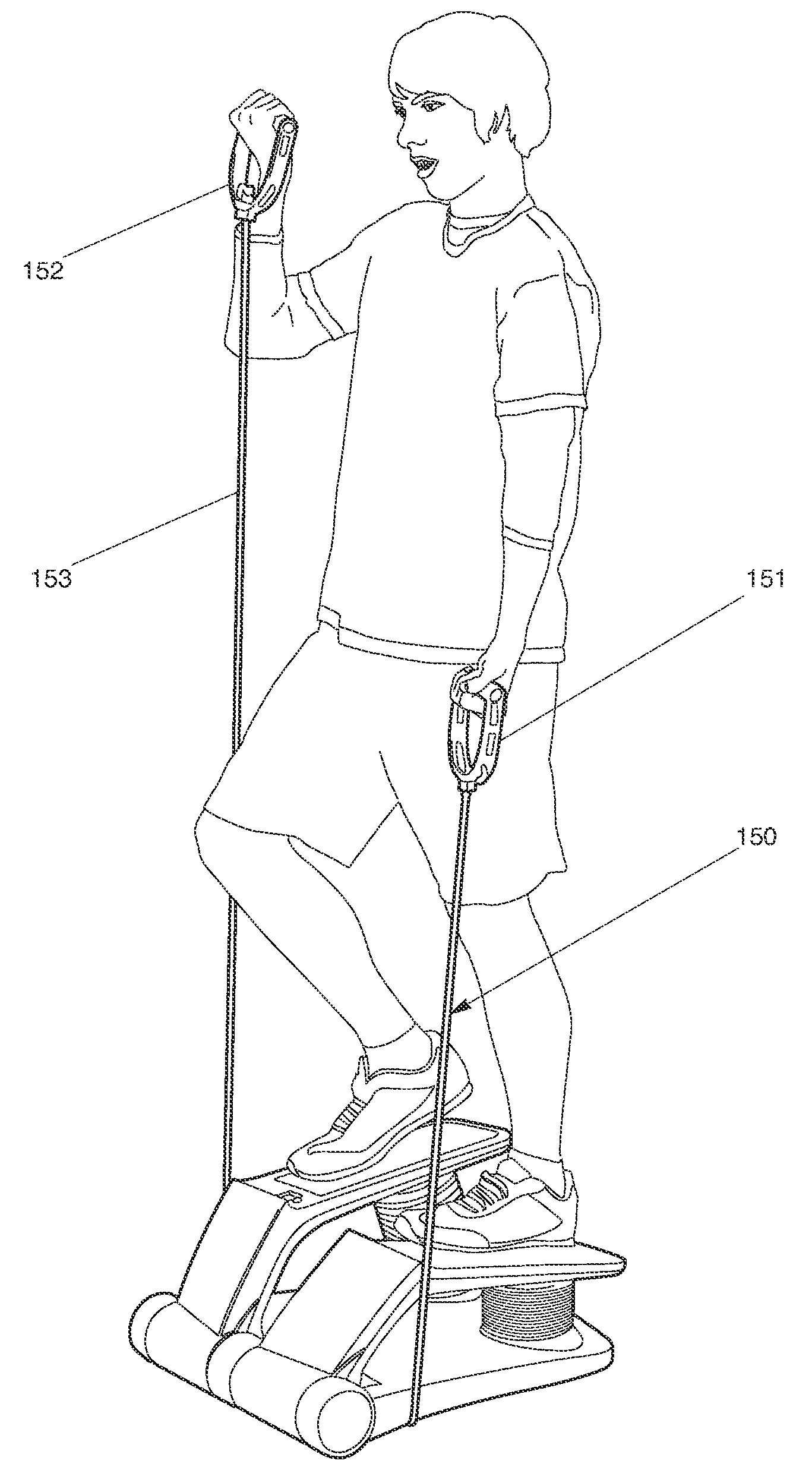Stair climbing exercise apparatus with improved bellows
a technology of exercise apparatus and bellows, which is applied in the field of exercise equipment, can solve the problems of limited reliability and life, unsatisfactory body action, and limited height and length of foam springs, so as to reduce the height of stair steps, reduce the stress on the undulation of the bellows, and reduce the angular movement of the bellows
- Summary
- Abstract
- Description
- Claims
- Application Information
AI Technical Summary
Benefits of technology
Problems solved by technology
Method used
Image
Examples
Embodiment Construction
[0040]Referring now to the drawings, the stair climbing exercise apparatus 10 of the instant invention is illustrated in FIGS. 3-10. As will hereinafter be more fully described, the stair climbing exercise apparatus 10 includes a unique arrangement of the bellows. The unique arrangement provides bellows, which substantially decrease the likelihood of a malfunction, or “blow-out” of the bellows, especially along the undulations of its outer edge.
[0041]Now referring to FIG. 3, the present invention is a stair climbing exercise apparatus 10 generally containing a housing 20 with a base 30 and a cover 40. The base is attached to the cover by a variety of fasteners. A pair of foot treadles 50A, 50B, is pivotally mounted to a pivot 60 and move relative to a pivot axis PA. In one embodiment, the pivot 60 has an elongated cylindrical shape, which is positioned between the base 30 and the cover 40. The treadles 50A, 50B respectively compress and elongate a pair of bellows 70, 71, which have ...
PUM
 Login to View More
Login to View More Abstract
Description
Claims
Application Information
 Login to View More
Login to View More - R&D
- Intellectual Property
- Life Sciences
- Materials
- Tech Scout
- Unparalleled Data Quality
- Higher Quality Content
- 60% Fewer Hallucinations
Browse by: Latest US Patents, China's latest patents, Technical Efficacy Thesaurus, Application Domain, Technology Topic, Popular Technical Reports.
© 2025 PatSnap. All rights reserved.Legal|Privacy policy|Modern Slavery Act Transparency Statement|Sitemap|About US| Contact US: help@patsnap.com



